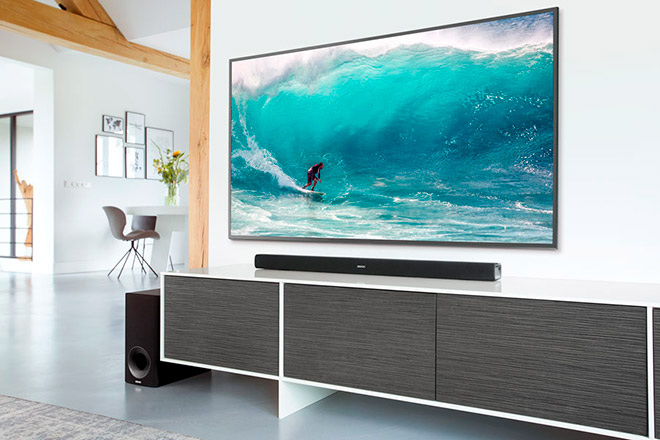
How to choose the perfect TV for your home: expert advice
Choosing a TV for your home is an important decision that affects the quality of your leisure time. Modern TVs offer a variety of features and technologies, so understanding all the nuances can be difficult. In this article, as consumer electronics experts, we'll share key tips to help you choose the perfect TV for your home.
1. Determine the screen size you need
Measure the space
The first step in choosing a TV is to determine what screen size will suit your space. Measure the distance from the place where you plan to install the TV to the seating areas. The general recommendation is that the distance to the screen should be approximately 1.5-2.5 times the diagonal of the TV.
Consider screen resolution
If you plan to buy a high-definition TV such as 4K or 8K, you can afford a smaller gap between the screen and viewers without losing image quality.
2. Screen resolution: 4K vs. 8K
4K (Ultra HD)
4K TVs have a resolution of 3840x2160 pixels, which is four times higher than Full HD. This provides clearer, more detailed images, especially on larger screens.
8K (Super Ultra HD)
8K TVs offer a resolution of 7680x4320 pixels. Despite the incredible image quality, there is still little content in this format. The cost of such models is also significantly higher.
3. Display technologies: OLED vs. QLED
OLED (Organic Light Emitting Diode)
OLED TVs are renowned for their deep blacks and vibrant colors thanks to individual lighting for each pixel. They also offer a wide viewing angle and a slim design.
QLED (Quantum Dot Light Emitting Diode)
QLED TVs developed by Samsung use quantum dots to improve brightness and color reproduction. They are not as expensive as OLEDs and have good performance even in bright light.
4. Smart features
Modern TVs are equipped with Smart TV functions that allow you to connect to the Internet, use streaming services and install applications. Make sure the TV you choose supports the platforms you want (e.g. Netflix, YouTube, Amazon Prime) and has a user-friendly interface.
5. Built-in image enhancement technologies
HDR (High Dynamic Range)
HDR technology improves contrast and color reproduction, making the picture more realistic. TVs that support HDR can display a wider range of colors and brightness levels.
Update frequency
The screen refresh rate is measured in Hertz (Hz) and indicates how many times per second the image is refreshed. To see fast-moving scenes (such as sports or video games) smoothly, choose a TV with a refresh rate of 120 Hz or higher.
6. Audio capabilities
Built-in speakers
Pay attention to the quality of the built-in speakers. Some models are equipped with high-quality audio systems, however, for better sound, it is recommended to purchase an additional sound bar or home theater.
Support for external audio devices
Make sure your TV has the necessary connectors (HDMI, optical output) to connect external audio devices.
7. Design and installation
Wall mount or stand
Decide how you will mount the TV - on the wall or on a stand. Make sure the model you select is suitable for your installation and fits in with your decor.
Cable management
Some TVs come with systems to keep cables neatly hidden, helping to maintain the aesthetics of your room.
8. Budget and guarantees
Decide your budget
The TV market offers models for every budget. Determine your budget and choose the best options within that range. Don't forget to factor in additional costs for accessories such as mounts or sound systems.
Warranty and service
Check your warranty and service centers nearby. This is important for quickly solving possible problems with the TV in the future.
Conclusion
Choosing the perfect TV for your home requires considering many factors, from screen size and resolution to display technology and smart features. With our expert advice, you can choose a TV that will delight you with picture and sound quality, as well as suit your needs and budget. Enjoy watching your favorite movies and shows on your new TV!






